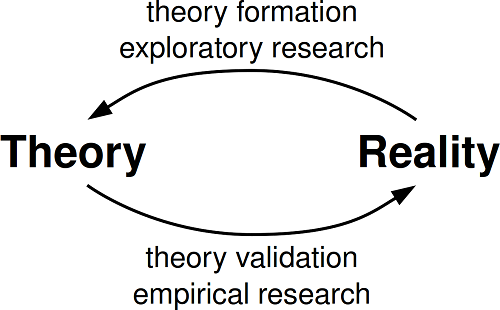
Exploring the Parallels: Similarities Between Alternative and Null Hypotheses
In the realm of scientific inquiry, hypotheses serve as critical components in the formulation and testing of theories. Two key types of hypotheses—alternative and null—play distinctive yet interconnected roles in the scientific method. In this exploration, we dissect the similarities between alternative and null hypotheses, shedding light on their importance in the scientific process.

Definition and Purpose:
- Alternative Hypothesis: This hypothesis proposes a specific relationship, effect, or difference between variables. It serves as the focus of the investigation and is often what researchers aim to support.
- Null Hypothesis: In contrast, the null hypothesis posits that there is no significant relationship, effect, or difference. Researchers typically test the null hypothesis to determine if there is enough evidence to reject it in favor of the alternative.
Statistical Testing:
- Alternative Hypothesis: Statistical tests are often employed to assess the likelihood of observing the results under the assumption that the alternative hypothesis is true. These tests help determine the strength of the evidence supporting the alternative hypothesis.
- Null Hypothesis: Similarly, statistical tests are used to evaluate the probability of obtaining observed results assuming the null hypothesis is true. Researchers seek to determine if the evidence is strong enough to reject the null hypothesis.
Mutual Exclusivity:
- Both hypotheses are mutually exclusive and exhaustive. If evidence strongly supports the alternative hypothesis, researchers may reject the null hypothesis. Conversely, if there is insufficient evidence for the alternative, the null hypothesis is retained.
Role in Research Design:
- Both hypotheses play crucial roles in shaping the research design. The alternative hypothesis guides the focus of the study, directing researchers to investigate specific relationships or effects. The null hypothesis sets a baseline for comparison, allowing researchers to assess the impact of variables.
Type I and Type II Errors:
- Alternative Hypothesis: In the context of the alternative hypothesis, a Type I error occurs when researchers mistakenly conclude that there is an effect or relationship when, in reality, there is none.
- Null Hypothesis: For the null hypothesis, a Type II error happens when researchers fail to reject the null hypothesis when there is, in fact, a significant effect or relationship.
- Below is a comparison table highlighting the key similarities between alternative and null hypotheses:
| Aspect | Alternative Hypothesis | Null Hypothesis |
| Definition and Purpose | Proposes a specific relationship, effect, or difference between variables. | Posits that there is no significant relationship, effect, or difference. |
| Statistical Testing | Tested using statistical methods to assess evidence supporting the hypothesis. | Assessed through statistical tests to determine the likelihood of observed results under the assumption of no effect. |
| Mutual Exclusivity | Mutually exclusive and exhaustive; if evidence supports the alternative, the null is rejected. | Mutually exclusive; rejection of the null implies support for the alternative. |
| Role in Research Design | Guides the focus of the study, directing researchers to investigate specific relationships or effects. | Sets a baseline for comparison, allowing researchers to assess the impact of variables. |
| Type I and Type II Errors | Type I error occurs when researchers mistakenly conclude an effect when there is none. | Type II error occurs when researchers fail to reject the null when there is a significant effect. |
This comparison table provides a concise overview of the similarities between alternative and null hypotheses, emphasizing their roles in hypothesis testing and the scientific research process.
FAQ: Alternative and Null Hypotheses
Q1: What is the main purpose of the alternative hypothesis in a scientific study?
A1: The alternative hypothesis proposes a specific relationship, effect, or difference between variables. It serves as the focus of the investigation and is what researchers aim to support with evidence.
Q2: How is the null hypothesis different from the alternative hypothesis?
A2: The null hypothesis posits that there is no significant relationship, effect, or difference between variables. It serves as a baseline for comparison, and researchers aim to determine if there is enough evidence to reject it in favor of the alternative.
Q3: How are statistical tests used in testing the alternative and null hypotheses?
A3: Statistical tests are employed to assess the likelihood of obtaining the observed results under the assumption that either the alternative or null hypothesis is true. Researchers use these tests to determine the strength of the evidence supporting or refuting the hypotheses.
Q4: Are the alternative and null hypotheses always mutually exclusive?
A4: Yes, both hypotheses are mutually exclusive and exhaustive. If evidence strongly supports the alternative hypothesis, researchers may reject the null hypothesis, and vice versa.
Q5: How do the alternative and null hypotheses contribute to research design?
A5: The alternative hypothesis guides the focus of the study, directing researchers to investigate specific relationships or effects. The null hypothesis sets a baseline for comparison, allowing researchers to assess the impact of variables and establish a framework for hypothesis testing.
Q6: What is a Type I error in the context of the alternative hypothesis?
A6: A Type I error occurs when researchers mistakenly conclude that there is a significant effect or relationship when, in reality, there is none. This error is associated with the potential for false positives.
Q7: What is a Type II error in the context of the null hypothesis?
A7: A Type II error occurs when researchers fail to reject the null hypothesis when there is a significant effect or relationship in reality. This error is associated with the potential for false negatives.
Q8: Can a study support both the alternative and null hypotheses?
A8: No, a study typically supports either the alternative or null hypothesis. If there is enough evidence to reject the null hypothesis, it implies support for the alternative, and vice versa. However, inconclusive results may occur if there is insufficient evidence.
Q9: How do researchers determine the level of evidence required to reject the null hypothesis?
A9: Researchers use statistical significance tests, such as p-values, to determine the level of evidence needed to reject the null hypothesis. The chosen significance level (e.g., 0.05) represents the threshold for considering evidence as statistically significant.
Q10: Are alternative and null hypotheses only used in experimental research?
A10: No, alternative and null hypotheses are used in various types of research, including experimental, observational, and correlational studies. They are fundamental components of hypothesis testing in scientific inquiry.
Q11: Can researchers revise hypotheses during a study?
A11: Yes, researchers may refine or modify hypotheses based on interim findings or unexpected results. However, any changes should be transparently reported and justified in the research documentation.
Q12: Are there specific guidelines for formulating alternative and null hypotheses?
A12: While there are general guidelines, the formulation of hypotheses depends on the nature of the study. Hypotheses should be clear, testable, and specific, reflecting the research question and objectives.
Q13: How do alternative and null hypotheses contribute to scientific rigor?
A13: The formulation and testing of hypotheses contribute to the rigor of scientific research by providing a structured approach to inquiry. They help researchers systematically evaluate and interpret data, ensuring the reliability and validity of study findings.
Q14: Can the rejection of the null hypothesis confirm the truth of the alternative hypothesis?
A14: No, the rejection of the null hypothesis does not confirm the truth of the alternative hypothesis. It indicates that there is enough evidence to suggest a significant effect or relationship, but the alternative hypothesis is not proven true with certainty.












Leave a Reply